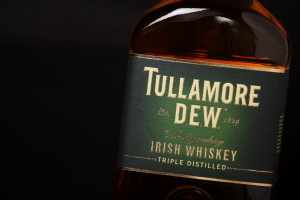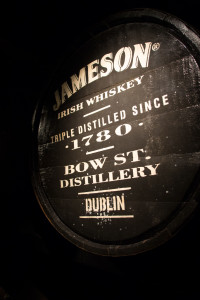Ok, for the record, Uisce Beatha Eireannach – Irish whiskey – has always been legit! However, soon, the legal standards that regulate the spirit will be greatly expanded and enhanced.
As every good CSS student knows, Irish whiskey has been defined and regulated since 1980 by the Irish Whiskey Act.
The Irish Whiskey Act of 1980 is a fairly concise document – no more than one page long – and states that Irish whiskey must:
- Be distilled in Ireland from a mash of cereal grains
- Be distilled to an alcoholic strength of less than 94.8% alcohol by volume (189.6 proof)
- Be distilled in such a way so that the distillate has an aroma and flavor derived from the materials used
- Contain no additives except for water and caramel coloring
- Be stored in wooden casks in Ireland for no less than three years
The act further goes on to define blended Irish whiskey as a spirit which must be comprised of at least two different distillates. And that’s it!
However…as of October 30, 2015, a new set of technical standards will be implemented in accordance with the European Union requirements for the PGI status of Irish whiskey.
These standards expand upon the Irish Whiskey Act of 1980 and include the following regulations:
- Irish whiskey must be bottled in Ireland or, if not bottled in Ireland, it must be shipped off the island in inert bulk containers and subject to company controls and strict verification to ensure the safety and integrity of the product.
- Irish whiskey is not allowed to be exported from Ireland in any type of wooden container.
These new regulations also provide definitions for the following types of Irish whiskey:
Irish Malt Whiskey: Irish malt whiskey must be made from 100% malted barley. The wort is separated from the solids before fermentation. Irish malt whiskey must be distilled in pot stills. The traditional practice is to use smaller pot stills in order to encourage complex flavors and a full, oily texture, however, there are no requirements as to the size of the still. Irish malt whiskey is traditionally triple-distilled, although double distillation may be used.
Irish Grain Whiskey: Irish grain whiskey is produced from a mash containing a maximum of 30% malted barley. The remainder is made up of unmalted cereal grains – typically maize, wheat, or barley. The mash typically does not undergo any separation of the solids from the liquids before distillation. This type of whiskey is continuously distilled using column stills. Irish grain whiskey may have either a light or a full flavor profile, depending on the cut points and other techniques employed by the distiller.
Irish Pot Still Whiskey: Irish pot still whiskey is required to be produced using a mash containing a minimum of 30% malted barley and a minimum of 30% unmalted barley. The remainder of the mash may be either malted or unmalted barley, and may include up to 5% other unmalted cereal grains (usually oats or rye). The wort is separated from the solids before fermentation. This type of whiskey must be batch distilled in pot stills. The traditional practice is triple-distillation in large pot stills, although double distillation may also be employed and there are no requirements as to the size of the still.
Blended Irish Whiskey: Blended Irish whiskey is a blend of two or more different whiskey types, which must be made in accordance with the standards stated above, and which may include Irish malt whiskey, Irish grain whiskey, and/or Irish pot still whiskey. The whiskeys that make up the blend may also be chosen from different distilleries, ages, types of cask finish, and flavor profiles in order to achieve the desired flavor and consistency. Blended Irish whiskey tends to be smooth and mellow with a range of flavors, and a light, silky mouth feel.
So on October 30, 2015 (and maybe every other day of the year), raise a glass – of Jameson, Tullamore DEW, Kilbeggan, or whatever you choose – and toast your friends “Sláinte mhaith!”
Post authored by Jane A. Nickles, your blog administrator
For more information:
Are you interested in being a guest blogger or a guest SWEbinar presenter for SWE? Click here for more information!


